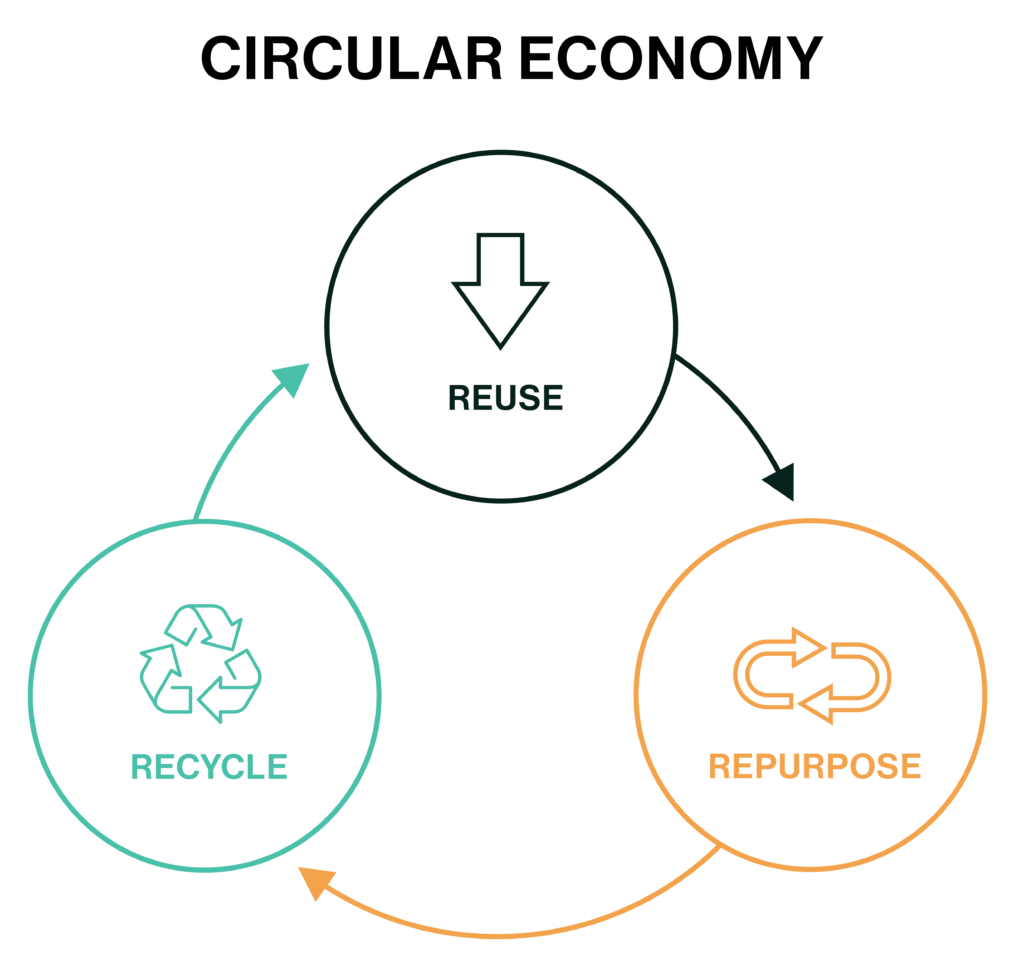April 23, 2024
Reduce, reuse, recycle: It’s a mantra we learned as kids and is one of the core environmental principles. The phrase may make you think of bringing your own grocery bags to the store, saving your leftovers, or putting your aluminum cans in the recycling bin. Did you know that this mantra could also apply to your electric car battery?
One of the best-kept secrets about electric vehicles is that, unlike traditional vehicles, the battery that powers the vehicle can have a “second life” after the vehicle itself is retired. It can be reused, repurposed, and, ultimately, the critical minerals contained in the battery can be recycled to make new ones. Recent studies show that many of the critical minerals in the battery can be recycled almost indefinitely.
The Environmental Promise of EV Battery Reuse and Recycling
Study after study has shown that when comparing the lifecycle impacts of electric vehicles (EV) and traditional cars, it isn’t close. Electric vehicles greatly reduce the air pollution and climate change-causing greenhouse gases emitted from our cars. Once EVs are on the road, they generate zero tailpipe emissions. That’s why transitioning to electric vehicles is one of the best strategies we have in combatting the dangerous effects of climate change already impacting the West.
The biggest component of electric vehicle batteries’ environmental impact comes from the mining required to build the battery itself. But if we put policies in place to ensure all EV batteries are reused or recycled, the need for mining will be drastically reduced – accelerating the positive environmental impact of EVs and allowing for greater adoption.
It has been estimated that if all EV batteries are recycled between now and 2050 and reused, it could reduce the need for mining to support the electric vehicle transition by up to 64%.
That reduced need for mining through reuse and repurposing of EV batteries will lower emissions and other negative impacts of resource extraction. Electric vehicles already have a sizeable lead over traditional vehicles in terms of environmental impacts, and promoting second-life applications will only improve the environmental friendliness of this technology.
Economic Opportunities in a Circular Economy


Creating a circular economy for EV batteries – a system where materials are recycled and reused as long as possible, instead of simply throwing them away – will also create jobs and spur local economies. Reusing batteries keeps them and their value in the U.S. economy and creates jobs associated with handling, transporting, repurposing, and recycling the batteries. The battery of the most sold EV in the U.S., a Tesla Model Y, is estimated to generate up to $1,500 in net profit per battery recycled, and these profits will increase as recycling costs decrease and the recycling industry grows. Other studies have estimated that for every 1,000 tons of lithium-ion batteries collected, 15 jobs are created. There is great potential for job growth and economic development associated with recycling these batteries, and the growth will expand in unison with the rapidly expanding EV market.
EV batteries are already being reused, repurposed, and recycled, but the second-life industry has substantial room to grow. Companies are recognizing the enormous economic benefits which can result from battery reuse and recycling, and the Interior West has some of the most significant developments in the entire country.

Very few electric vehicle batteries have reached the end of their useable life. EVs have been commercially available since about 2010, but most of the EVs on the roads today have been sold in the last few years. And EV batteries can last a very long time. While some are under warranty for up to 150,000 miles, there are estimates that they can last up to 300,000 or even 500,000 miles. Unlike gas or diesel vehicles which have many component parts that need to be replaced, an EV just has a battery, and it lasts a long time without replacement – and even longer with the support of a robust EV battery second-life industry.
Seizing the Opportunity to Drive EV Battery Second-Life Policy
The fact that EV batteries last a long time presents a tremendous opportunity for us to act now and put policies in place to ensure that every EV battery is not discarded but rather evaluated for reuse, repurposing, and recycling, and the economic and environmental benefits of those batteries are maximized. In the coming decades, electric vehicles will begin to retire by the thousands, leaving a significant supply of lithium-ion batteries that are still full of valuable materials.
We are in the infancy of establishing second-life pathways for EV batteries – mostly because EV batteries are so new. But internationally, action is already being taken to create this circular economy, and, in the U.S., states are starting to catch up. New Jersey passed legislation in January 2024 which establishes a framework to create this type of circular economy that passed with widespread bipartisan support.
WRA recently published a report “Emerging Policies and Best Practices to Promote Lithium-Ion Battery Second-Life Applications in the United States” that outlines policy second-life applications of electric vehicle batteries. The report examines policies being pursued domestically and internationally, but the ultimate focus is the presentation of key policies that state policymakers and other stakeholders can adopt to promote a circular economy for EV batteries. In addition to exploring these key policies, the report also provides a deeper look at the composition of lithium-ion batteries and discusses the various second-life pathways that batteries can take after an EV is retired.




